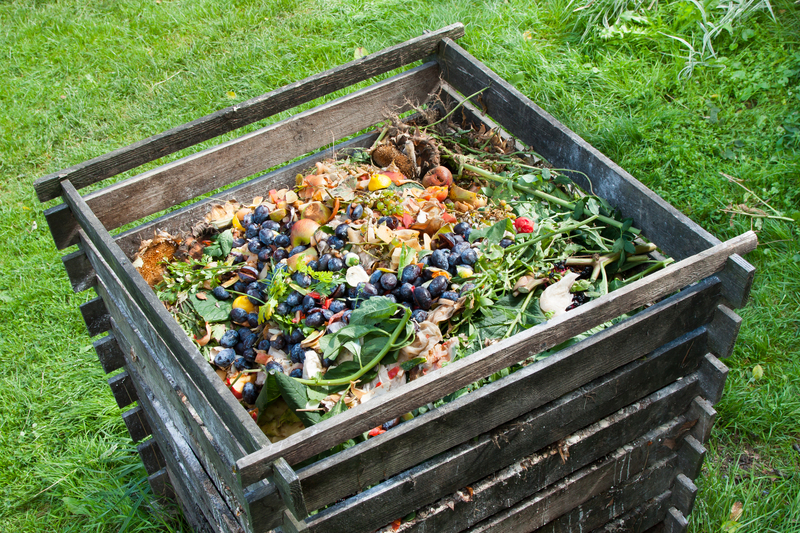Transform Your Home From Overwhelming Clutter to Comfort and Calm
Feeling overwhelmed by clutter? If stepping into your home triggers anxiety or frustration rather than relaxation, it's time to create a nurturing, organized living space. By intentionally transforming your environment, you can reclaim your home and cultivate an atmosphere of comfort and calm. This comprehensive guide will walk you through effective strategies to reduce household clutter, improve organization, and turn chaos into tranquility.
The Impact of Clutter on Your Well-being
First, let's explore why clutter can be so distressing--and why a clutter-free home feels so good.
Psychological Effects of Clutter
- Stress Amplification: Clutter sends signals of unfinished work to your brain, increasing stress and anxiety.
- Reduced Productivity: Disorganization makes it difficult to focus or complete tasks efficiently.
- Impact on Mental Health: Numerous studies link cluttered spaces to increased feelings of depression and fatigue.
Imagine coming home to a serene sanctuary where everything has its place. It's not just about aesthetics--it's about mental clarity and emotional well-being.

Benefits of a Calm, Organized Home
- Promotes relaxation and rest
- Improves sleep quality
- Simplifies everyday routines
- Enhances pride in your living space
- Frees up time for what matters most
Transforming your home from overwhelming clutter to comfort and calm can genuinely improve your quality of life.
Step-by-Step Plan to Tame Clutter and Create Calm
1. Set Clear Goals and Intentions
Before diving in, envision your ideal home environment. What feelings do you want to evoke in each room--peace, productivity, warmth? Setting intentions will help you stay focused during the organizing process.
2. Start Small: One Area at a Time
Tackling the whole house at once can be daunting. Choose a single room, area, or even one drawer as your starting point. Completing small tasks builds momentum and keeps you motivated.
- Entryway: Clear out shoes, coats, and unopened mail
- Kitchen: Sort through pantry items, utensils, and rarely used kitchenware
- Bedroom: Remove clothes that no longer fit or spark joy
- Living Room: Organize books, magazines, and electronics
3. Use the Four-Box Decluttering Method
Grab four boxes and label them: Keep, Donate, Trash, Relocate.
As you sort through your belongings, place each item in a box according to its fate. Be honest--is this something you use, need, or love?
- Keep: Essential, frequently used items in good condition
- Donate: Items in good shape you no longer use, but someone else could cherish
- Trash: Broken or unusable items
- Relocate: Things that belong elsewhere in the house
4. Organize As You Go
Once you've decluttered, it's time to organize what's left. Group similar items together, assign them a specific home, and use simple storage solutions like baskets, bins, and shelves.
- Clear countertops and surfaces
- Arrange items by frequency of use
- Label containers for easy retrieval
- Store vertically to save space
5. Tackle Sentimental Clutter Thoughtfully
Sentimental items can be the hardest to let go of. Take photos of memorabilia, write down stories, and keep only what is truly meaningful. Preserve your memories without sacrificing your space.
6. Create Calm Through Design
Once your rooms are decluttered, boost comfort by making intentional design choices. A calm home environment is not just tidy but also soothing to the senses.
- Choose a calming color palette: Soft blues, greens, or neutrals can promote relaxation
- Use natural light or warm artificial lighting to create a welcoming atmosphere
- Add cozy textiles: Throws, pillows, and rugs soften hard edges
- Bring in elements of nature: Houseplants or floral arrangements add vitality
- Incorporate personal touches: Artwork, photos, or treasured items--displayed intentionally, not haphazardly
Maintaining Comfort and Calm: Habits for a Clutter-Free Home
Establish Daily and Weekly Routines
Habits are the cornerstone of lasting change. Spending just a few minutes each day tidying up can make a huge difference.
- Make your bed every morning to set a positive tone
- Put items away immediately after use
- Sort mail and paperwork daily to avoid piles building up
- Set a weekly cleaning and decluttering schedule
Mindful Consumption: Buy Less, Choose Well
To keep your home peaceful for the long-term, adopt a minimalist mindset. Ask yourself before every purchase--do I really need this? Will it add to my life or to my clutter?
- Focus on quality over quantity
- Choose multi-functional furniture and tools
- Let go of impulse buys and unused gifts
Involve the Whole Household
The burden of fighting clutter shouldn't rest on one person alone. Assign age-appropriate organizing tasks to all family members and establish shared expectations for your home's tidiness.
- Use checklists or charts for children
- Hold monthly decluttering sessions as a family
- Celebrate your successes together!
Room-By-Room Decluttering Tips
Transforming the Kitchen: Heart of the Home
- Clear fridge, pantry, and cabinets of expired or unused food
- Organize utensils and cookware by category
- Designate zones: prep area, baking center, coffee station
- Use clear containers and labels for easy access
A Calming Bedroom Oasis
- Edit your closet seasonally, donating or recycling clothes you haven't worn in a year
- Use under-bed storage for off-season items
- Keep nightstands minimal--just a lamp, a book, maybe a candle
Serene Living Spaces
- Limit visible items to your favorites (books, art, keepsakes)
- Arrange furniture to facilitate easy movement and conversation
- Store extra blankets or toys in decorative baskets
Bathroom Bliss
- Dispose of expired medications and beauty products
- Use baskets or trays to corral toiletries
- Limit duplicates--keep only what you regularly use
Decluttering Challenges and How to Overcome Them
Emotional Attachments
Problem: Letting go of gifts, heirlooms, or sentimental items.
Solution: Acknowledge the memory, take a photo, or keep a single, meaningful token. Pass items on to those who will appreciate them.
Overwhelm and Procrastination
Problem: Not knowing where to start, feeling paralyzed.
Solution: Set a timer for 10-15 minutes and just begin somewhere small. Progress, not perfection, is the goal.
Family Resistance
Problem: Other household members aren't on board.
Solution: Have honest, compassionate conversations about how an organized home benefits everyone--less stress, more harmony, easier cleaning.

When to Call in a Professional Organizer
For some, professional decluttering help is the answer. If your clutter feels insurmountable, if you're facing a transition (like moving or downsizing), or want expert tips on creating a calming atmosphere, a home organization specialist can provide the structure and support you need.
Look for certified pros in your area or online--many offer virtual consultations!
Final Thoughts: Your Home, Your Sanctuary
At its best, your home is more than walls and furniture--it's a safe haven, a retreat where you can recharge and be yourself. Transforming a cluttered home into a comfort zone isn't just about cleaning up; it's about reclaiming your sense of peace and well-being.
Start with small, manageable changes. Celebrate incremental progress. Soon, you'll discover the calm, cozy home you deserve was within reach all along!
Ready to transform your home from clutter to comfort?
Begin now--your serene sanctuary awaits!
